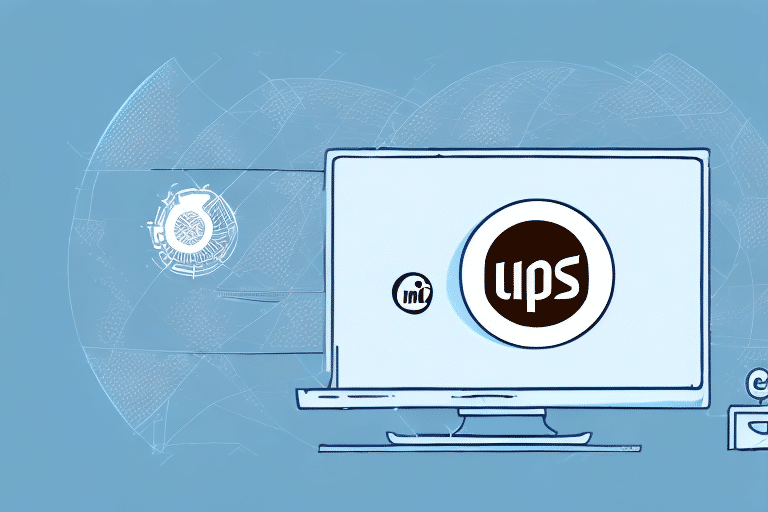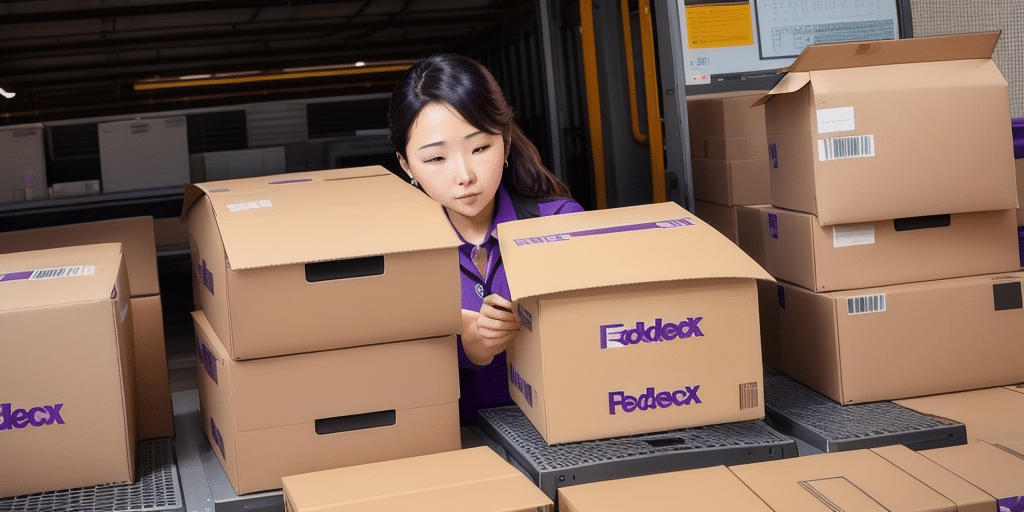Setting Up a UPS Worldship Terminal Server
In today's fast-paced business environment, leveraging technology is essential for streamlining operations and enhancing productivity. One critical area where technology plays a pivotal role is in shipping and logistics. Implementing a UPS Worldship Terminal Server can significantly optimize and expedite shipping processes for businesses. This comprehensive guide will walk you through the steps to set up a UPS Worldship Terminal Server, covering hardware and software requirements, optimal configuration, security protocols, and the numerous benefits associated with its implementation.
Why You Need a UPS Worldship Terminal Server
A UPS Worldship Terminal Server offers numerous advantages for businesses aiming to automate and manage their shipping operations efficiently:
- Automation and Tracking: Automates shipping operations and allows multiple users to access and input shipping information from a centralized location, reducing redundancy and enhancing efficiency.
- System Integration: Integrates seamlessly with other business systems such as accounting and billing applications, streamlining processes from order fulfillment to invoicing.
- Real-Time Tracking: Provides real-time tracking and monitoring of shipments, enabling businesses to oversee their shipments throughout the delivery process.
- Customization: Allows businesses to customize shipping options, including setting shipping rates based on weight or destination and creating custom shipping labels and packing slips.
According to a 2023 Statista report, businesses utilizing UPS Worldship have seen a 30% increase in shipping efficiency and a 25% reduction in shipping errors.
Hardware and Software Requirements for Setting Up a UPS Worldship Terminal Server
Establishing a UPS Worldship Terminal Server necessitates specific hardware and software configurations to ensure optimal performance:
Hardware Requirements
- Processor: Multi-core processor
- Memory: Minimum of 8GB RAM
- Storage: At least 200GB of hard disk space
- Operating System: Windows Server 2016 or later
- Network: Dedicated network connection with a minimum speed of 1Gbps
- Power Supply: Uninterruptible Power Supply (UPS) to maintain power continuity
Software Requirements
- Operating System: Windows Server 2016 or above
- Database: Microsoft SQL Server 2016 or later
- UPS Worldship Software: Latest version available from the official UPS website
Ensuring these requirements are met is crucial for the smooth installation and operation of the UPS Worldship Terminal Server. Additionally, having a dedicated network connection helps prevent congestion and maintains server performance.
Installing the Latest Version of UPS Worldship Software
Installing the UPS Worldship software is a straightforward process when following these steps:
- Obtain the Installation Kit: Acquire the latest UPS Worldship installation package from your UPS account representative or download it directly from the UPS official website.
- Verify System Compatibility: Ensure your server meets the minimum system requirements, including sufficient RAM, storage space, and compatible operating system.
- Run the Installer: Execute the installation wizard, following the on-screen instructions to complete the installation process.
- Configure Initial Settings: After installation, perform initial configurations such as setting up user accounts and integrating with existing business systems.
- Test the Installation: Create a test shipment to verify that all features are functioning correctly.
- Update Regularly: Keep the software updated by regularly checking for and installing the latest updates and security patches.
Proper installation ensures that your UPS Worldship Terminal Server operates efficiently and leverages the latest features and security enhancements.
Configuring the Server Settings for Optimal Performance
To achieve optimal performance from your UPS Worldship Terminal Server, careful configuration of server settings is essential:
Network Configuration
- IP Address Setup: Assign a static IP address to the server to ensure consistent network communication.
- DNS and DHCP: Configure DNS settings and, if necessary, set up DHCP for dynamic IP allocation within your network.
System Configuration
- Account Information: Enter accurate account details for seamless integration with UPS services.
- Printer Settings: Configure printers for label printing and other necessary outputs.
- Database Settings: Ensure optimal database configuration for efficient data storage and retrieval.
- General Setup Options: Adjust general settings to align with your business workflows and requirements.
Security Configuration
- Firewall Setup: Implement firewall rules to allow only necessary traffic to and from the server.
- Antivirus Installation: Install reputable antivirus software to protect against malware and other security threats.
- Regular Monitoring: Continuously monitor server performance and security to identify and address potential issues promptly.
Creating User Accounts and Assigning Roles and Permissions
Effective user management is crucial for maintaining the security and integrity of your UPS Worldship Terminal Server:
Defining User Roles
- Administrator: Full access to create and manage user accounts, configure system settings, and oversee security protocols.
- System Operator: Capable of modifying system settings and managing operational aspects without access to sensitive administrative functions.
- User: Limited access focused on entering shipping information and performing essential tasks.
- Supervisor: Access to view reports and oversee shipping operations without the ability to alter system configurations.
Assigning Permissions
- Ensure that each user role has appropriate permissions to prevent unauthorized access and maintain system security.
- Regularly review and update user roles and permissions to reflect changes in job responsibilities or personnel.
Proper management of user accounts and permissions enhances security and ensures that each employee has the necessary access to perform their duties effectively.
Setting Up Security Protocols to Protect Sensitive Data
Protecting sensitive data is paramount when managing shipping and logistics operations. Implementing robust security protocols safeguards customer information, shipping details, and financial records:
- User Authentication: Utilize strong authentication methods, including multi-factor authentication, to verify user identities.
- Data Encryption: Ensure that all sensitive data is encrypted both in transit and at rest to prevent unauthorized access.
- Secure Remote Access: Implement secure methods for remote access, such as VPNs, to protect data from potential breaches.
- Regular Security Audits: Conduct periodic security assessments to identify and mitigate vulnerabilities.
- Incident Response Plan: Develop and maintain an incident response strategy to address potential security breaches promptly.
According to the CSO Online, data breaches in logistics can cost businesses up to $3.86 million on average, highlighting the importance of robust security measures.
Troubleshooting Common Errors During Installation
During the installation of the UPS Worldship Terminal Server, you may encounter several common issues. Addressing these promptly ensures a smooth setup process:
SQL Server Issues
- Compatibility: Ensure that the installed SQL Server version is compatible with UPS Worldship.
- Configuration: Verify that SQL Server is correctly configured to work with the terminal server.
Server Configuration Errors
- Double-check all server settings, including network configurations and firewall rules, to ensure they align with UPS Worldship requirements.
Outdated Drivers
- Update all server drivers to the latest versions to prevent compatibility issues during installation.
Installation Timeouts
- Ensure a stable internet connection during installation to prevent timeouts caused by interrupted downloads or updates.
Maintaining detailed error logs and consulting the UPS Worldship support can aid in resolving these issues efficiently.
Integrating the UPS Worldship Terminal Server with Other Business Systems
Integration with other business systems is vital for maximizing the efficiency of your shipping operations:
Customer Relationship Management (CRM) Integration
- Synchronize customer data to provide seamless service and accurate shipment information.
Accounting Software Integration
- Automate billing and invoicing processes by linking shipping data with financial records.
Enterprise Resource Planning (ERP) Integration
- Coordinate shipping activities with other business processes such as inventory management and order processing.
Integrating UPS Worldship with these systems reduces data redundancy, minimizes errors, and enhances overall operational efficiency. For instance, integrating with an ERP system can lead to a 20% reduction in shipping-related errors and a 15% increase in order processing speed, as reported by ERP Software Blog.
Training Employees on How to Use the UPS Worldship Terminal Server Efficiently
Ensuring that employees are well-trained in using the UPS Worldship Terminal Server is crucial for maximizing its benefits:
Comprehensive Training Programs
- Software Navigation: Teach employees how to navigate the UPS Worldship interface effectively.
- Data Entry Accuracy: Emphasize the importance of accurate data entry to prevent shipment errors.
- Security Protocols: Instruct employees on maintaining data security and recognizing potential security threats.
- Troubleshooting: Provide training on common issues and how to resolve them promptly.
Ongoing Support and Resources
- Offer continuous support through help desks or dedicated IT personnel.
- Maintain up-to-date training materials and resources for reference.
Effective training leads to enhanced performance, reduced errors, and increased compliance with company policies, ultimately contributing to smoother shipping operations.
Benefits of Using a UPS Worldship Terminal Server for Shipping and Logistics Operations
Implementing a UPS Worldship Terminal Server offers a multitude of benefits that enhance shipping and logistics operations:
- Increased Efficiency: Automates repetitive tasks, reducing manual data entry and processing time.
- Improved Accuracy: Minimizes errors in shipping information, leading to fewer lost or misdirected packages.
- Enhanced Tracking: Provides real-time visibility into shipment statuses, improving customer satisfaction.
- Cost Reduction: Streamlines processes to lower operational costs associated with shipping and logistics.
- Scalability: Adapts to growing business needs, accommodating increased shipping volumes without compromising performance.
Businesses that have adopted UPS Worldship Terminal Server report a 25% improvement in shipping accuracy and a 20% reduction in shipping costs, according to a Forbes Technology Council article.
Comparing Different Shipping Solutions to Determine the Best Fit for Your Business Needs
Choosing the right shipping solution is vital for the success of your logistics operations. When comparing different shipping solutions, consider the following factors:
Cost
- Evaluate the total cost of ownership, including software licensing, hardware investments, and ongoing maintenance expenses.
Features
- Assess the range of features offered, such as automation capabilities, integration options, and real-time tracking.
Scalability
- Determine if the solution can scale with your business growth and handle increasing shipping volumes.
Compatibility
- Ensure the shipping solution integrates seamlessly with your existing business systems like CRM, ERP, and accounting software.
Reliability
- Consider the reliability and uptime of the shipping solution to avoid disruptions in your operations.
While the UPS Worldship Terminal Server is an excellent choice for small to medium-sized businesses seeking to streamline their shipping and logistics operations, larger enterprises with more complex shipping requirements might benefit from more robust solutions like FedEx Integrations or DHL Express Shipping Tools.
Frequently Asked Questions About Setting Up a UPS Worldship Terminal Server
Here are some common questions and answers regarding the setup of a UPS Worldship Terminal Server:
1. What are the minimum system requirements for UPS Worldship Terminal Server?
The server must have a multi-core processor, at least 8GB of RAM, 200GB of hard disk space, Windows Server 2016 or later, and Microsoft SQL Server 2016 or newer.
2. How do I integrate UPS Worldship with my existing CRM software?
Integration typically involves using APIs provided by UPS. Detailed instructions can be found in the UPS integration guide.
3. What steps should I take if the installation fails?
First, review the error logs to identify the issue. Common solutions include verifying system requirements, ensuring all dependencies are met, and consulting the UPS support for assistance.
4. How can I ensure data security on the UPS Worldship Terminal Server?
Implement strong authentication methods, encrypt sensitive data, maintain updated antivirus software, and regularly conduct security audits.
5. What training resources are available for employees?
UPS offers comprehensive training materials and support. You can access these resources through the UPS training portal.
6. Can UPS Worldship Terminal Server handle high-volume shipping operations?
Yes, it is designed to scale with your business needs, accommodating increased shipping volumes efficiently.
7. What are the benefits of upgrading to the latest version of UPS Worldship?
Upgrading ensures access to the latest features, security enhancements, and improved performance, enabling more efficient shipping operations.
In conclusion, setting up a UPS Worldship Terminal Server can transform your shipping and logistics operations by enhancing efficiency, accuracy, and overall productivity. By following the outlined steps and adhering to best practices in configuration and security, your business can fully leverage the capabilities of UPS Worldship to optimize its shipping processes.






















